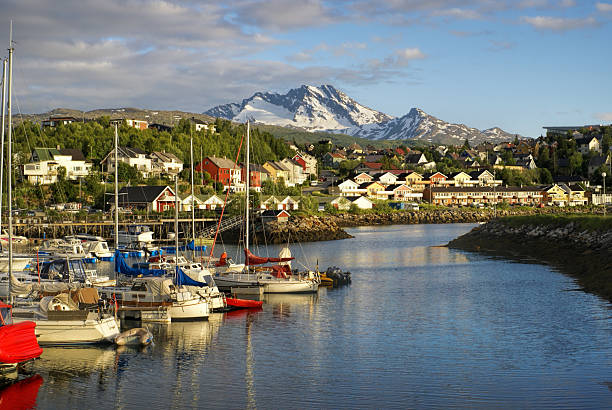Published on
September 14, 2025
Norway’s tourism boom has brought unexpected challenges, particularly for its remote areas, where a surge in visitors has led to unsanitary practices. As international travelers flock to scenic destinations like the Lofoten Islands, local infrastructure struggles to accommodate the influx, leaving tourists with limited access to bathroom facilities. This has resulted in visitors resorting to using private gardens and yards as makeshift restrooms. The lack of proper planning and facilities for such a high volume of tourists has created a disturbing and uncomfortable situation for residents, highlighting the urgent need for better management of Norway’s growing tourism industry.
Norway, renowned for its breathtaking landscapes—ranging from the iconic fjords to the ethereal Aurora Borealis—has long been a coveted destination for travelers. Recently, this Scandinavian gem has witnessed an unprecedented surge in tourism, a phenomenon that is reshaping both its scenic appeal and its local communities. The country’s allure, enhanced by natural wonders like the midnight sun and the remote villages that inspired Disney’s Frozen, has resulted in a dramatic increase in the number of international visitors.
In 2024 alone, Norway welcomed 6.2 million international tourists, marking a significant 10% increase from the previous year and surpassing the nation’s permanent population of 5.5 million. This influx has had a profound impact on smaller cities like Tromsø and Bodø, as well as more isolated areas such as the Lofoten Islands, where tourist numbers have exceeded the number of locals. While the economic benefits of this tourism boom are undeniable, the rapid rise in visitors has put a strain on infrastructure and local resources, particularly in remote areas ill-equipped to handle such a surge.
One of the most striking issues arising from the growing number of visitors is the lack of adequate facilities for tourists in these distant regions. With scenic beaches and hiking trails often separated by miles of untouched wilderness, many travelers find themselves far from any public restrooms. As a result, some visitors have resorted to using private properties, such as gardens and yards, to relieve themselves. In 2023 and 2024, multiple reports emerged of residents discovering unpleasant surprises in their gardens, with tourists using these private spaces as makeshift restrooms due to the lack of nearby facilities.
These incidents have become a point of frustration for the locals, prompting them to coin the term “s**tting in gardens” as a way to highlight the broader issue of mass tourism’s unsustainable effects. The phrase has gained traction as a symbol of the unforeseen consequences of an industry that is growing rapidly without regard to the infrastructure needed to support it.
The Lofoten Islands, with a permanent population of just 24,000 to 25,000 people, have been particularly affected by this trend. In 2024 alone, it is estimated that over one million people visited the archipelago, far outstripping the capacity of local resources. The effects of this increase in foot traffic extend beyond the inconvenience of unexpected visitors to private property. Soil erosion has become a serious concern, particularly in areas frequented by hikers and campers. The natural landscape is being altered by the sheer volume of visitors, with popular spots suffering from significant wear and tear. Additionally, the surge in car traffic has contributed to pollution in both urban and rural areas, further exacerbating the environmental toll.
Littering has also become a growing problem, particularly in remote areas where the local workforce is too small to effectively manage waste. With fewer people available to clean up after the influx of visitors, discarded items have begun to accumulate, further detracting from the pristine environment that attracts tourists in the first place. These issues present a stark contrast to the pristine, untouched image that Norway has long been known for.
The challenges posed by these unsustainable tourism practices are complex, with no simple solutions in sight. On one hand, tourism is a vital part of Norway’s economy, bringing significant revenue to the country. On the other hand, the strain on local communities and the environment is becoming increasingly difficult to ignore. Local authorities and residents are grappling with how to balance the economic benefits of tourism with the preservation of the country’s natural beauty and the quality of life for its inhabitants.
As a result, many local residents are urging tourists to take responsibility for their actions when visiting these remote regions. They encourage travelers to plan their trips carefully, ensuring that they are prepared for long hikes and excursions by bringing essential supplies, including waste bags, to avoid the temptation of using private gardens as bathroom facilities. In the case of an emergency, visitors are urged to pack out their waste, leaving the natural environment as they found it.
Efforts to manage the impact of tourism on Norway’s most remote regions are ongoing, but solutions will require a careful balance of regulation, education, and infrastructure investment. For the time being, residents hope that greater awareness and responsible behavior from visitors will help mitigate the more unsightly consequences of an industry that, while lucrative, is rapidly pushing the limits of what the country’s natural spaces can sustain.
